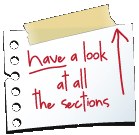Consumer Unit / Fuse Box Explained
Consumer Unit / Fuse Box:
-
A consumer unit or fuse box is used to control and distribute electricity around your home. It usually contains a main switch, circuit breakers and one or more residual current devices (RCD)
 Know where your consumer unit or fuse box is located, so that in an emergency (such as the lights going out) you can reach it quickly.
Know where your consumer unit or fuse box is located, so that in an emergency (such as the lights going out) you can reach it quickly. Keep a (working!) torch close by, so that you can see the consumer unit if all the lights do go out
Keep a (working!) torch close by, so that you can see the consumer unit if all the lights do go out Someone in your home should regularly test the RCDs – every three months - by pressing the button marked ‘T’ or ‘Test’.
Someone in your home should regularly test the RCDs – every three months - by pressing the button marked ‘T’ or ‘Test’.
Mains Switch:
-
The mains switch allows you to turn off your electricity supply by one flick of a switch.
The consumer unit should be easy to get to, so find out where the mains switch is to turn the electricity off in an emergency.
Some electrical installations have more than one mains switch. For example, if your home is heated by electric storage heaters, you may have a separate consumer unit (fuse box) for them.
Circuit Breakers:
-
Circuit breakers are automatic protection devices that disconnect the electricity supply if a fault is detected on any of the circuits.
You can also use the circuit breakers to turn off individual circuits.
When they ‘trip’, you can simply reset the switch. However, you first need to find and correct the fault, which, for instance, could be that a light bulb has blown or a faulty electrical appliance has been plugged in and switched on.
Residual Current Devices:
-
A RCD is a safety device that switches off electricity if there is a fault. RCDs are far more sensitive than normal fuses and circuit-breakers and provide additional protection against electric shock.
Someone in your home should regularly test the RCDs –every three months -by pressing the button marked ‘T’ or ‘Test’. The device should switch off the supply. You should then switch it back on to restore the supply.
